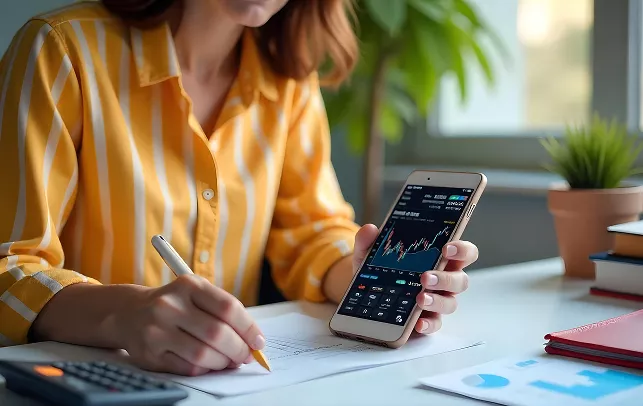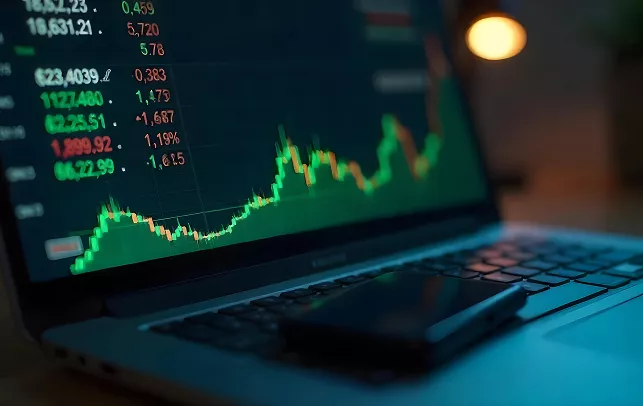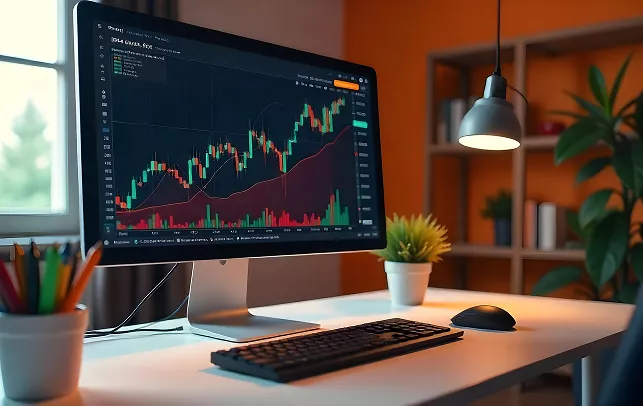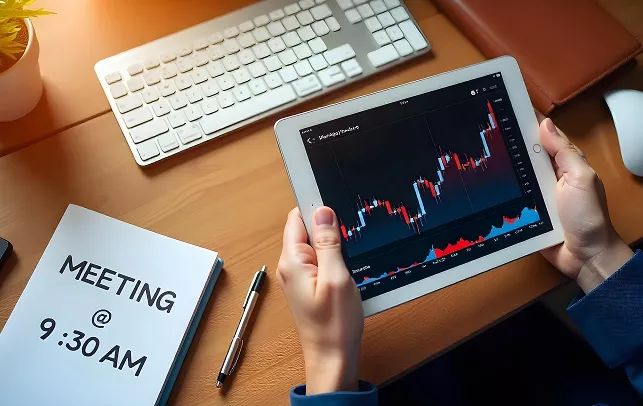Always up-to-date
Our experts continuously werify broker data to provide the most up-to-date information
Lest updated on
Jul 2, 2025
We double-check broker fee details each month which is made possible through parthner paid advertising. Learn more this here.
Best Forex Demo Accounts in 2025
A demo account is the safest way to test forex trading in 2025. No risk, no pressure — just real market conditions with virtual funds. It’s the tool traders use to check execution speed, spreads, platform features, or a new strategy before going live.
But not all demo accounts are equal. Some last forever, others expire in 30 days. Some show live quotes, others run on outdated data. And while one platform gives you full access to indicators and analytics, other limits even basic functions.
The difference between the best forex demo accounts becomes obvious when you’re testing scalping, high-frequency setups, or automation. Delay, slippage, or missing tools — even on demo — can ruin the result. That’s why choosing the right one matters, even if you’re not risking real money yet.


What is a Forex Demo Account?
A forex demo account is a training ground with real charts and fake money. It looks just like a live account — quotes, spreads, tools, everything — but you’re trading with virtual funds. No stress, no losses, just the market as it is.
Most brokers offer it as a trial, but for traders, it’s a lot more practical: test execution speed, experiment with leverage, get used to the interface. And when the conditions are close to live — that’s where the real value kicks in.
How Does a Forex Demo Account Work?
You open the platform, log in, and get access to virtual funds — usually $10,000 to $100,000. You can trade any major or exotic pair, apply indicators, use expert advisors, or test reactions during news spikes. On the surface, it looks like a real account.
But not every forex demo account runs on live pricing. Some brokers provide real-time quotes and simulate execution delays and slippage — just like live trading. Others use fixed spreads and perfect fills, which makes the platform look smoother than it is.
If you’re planning to test real strategies or algo logic, look for the best forex demo account that mimics actual market conditions. Otherwise, what works on demo may fall apart when money is real.





Differences Between Demo and Live Forex Accounts
The interface might look the same but trading a best forex demo account and going live are two very different experiences. On demo, it’s easy to skip stop-losses, open oversized positions, or chase setups without thinking twice — because there’s no fear of loss. You can afford to make bad decisions and move on.
On a real account, everything tightens up. You hesitate. You overthink entries. A few points of slippage or a spread widening during news suddenly feel like a big deal. That mental pressure changes how you execute — and that’s something no demo can fully simulate.
There’s also the technical side. Some brokers throttle demo performance or process demo orders differently than live ones. Even the best forex demo platform might react faster than the live server during high volatility. That creates a false sense of precision.
A demo forex trading account is still the best place to build structure — to test setups, tune lot sizes, and develop rules. But don’t rely on it as proof that a strategy will survive real markets. Treat demo results as theory and live account as practice results.
Who Should Use a Forex Demo Account?
Anyone. And at some point — everyone.
Beginners use a forex demo account to get familiar with the basics: how to open and close trades, how margin works, what leverage does, and how fast the market can flip. It’s the safest way to build confidence before putting money on the line.
Strategy traders rely on demo accounts to pressure-test new ideas. You throw setups at different market phases — trends, consolidation, volatility spikes — and see what holds up. It’s cleaner than backtesting and closer to real-time decisions.
Algo traders run their bots here first. They check for execution errors, test logic against live data, and fine-tune behavior without risking capital. A solid best forex demo platform helps them catch issues early — before they cause real losses.
Even experienced traders come back to demo when switching brokers or platforms. Changing from MT4 to cTrader? Trying raw spreads instead of commission-free accounts? You use demo to adjust before you commit.
If your setup changes — whether it’s a new strategy, a different asset, or a new broker — the best demo account for forex trading is where you make sure it works before real money is involved.
Best A-Book Forex Brokers
Best Forex Demo Accounts: Key Features to Look For
Not every demo account is built the same, they may look similar but in fact they are completely different. Some feel like full-scale trading environments, others are more like sandbox mode and feels like you are riding a bike with training wheels. And while the interface may look sleek, it’s what’s running underneath that actually matters.
The best demo accounts offer realistic execution, full platform access, and don’t rush you with a 30-day timer. If you’re going to test strategies or evaluate a broker, these details can make or break your experience.
Unlimited vs. Limited Demo Accounts
An unlimited forex demo account gives you room to breathe. You can trade at your own pace, run tests over weeks, and return after breaks without losing access. Whether you’re building a system from scratch or tweaking an algo that needs dozens of trades for proper evaluation — there’s no deadline chasing you.
That’s a big deal if your strategy isn’t built for quick results. Swing trading, multi-day setups, or deep platform testing — all of it takes time. The best demo forex account won’t rush that process.
Limited demos are more common than they should be. Many brokers cut off access after 30 or 60 days. For basic testing, that’s fine. But if you’re comparing execution between platforms, checking consistency during volatile sessions, or running trades across different market cycles — that timer becomes a problem.
Some brokers let you reset your free forex demo account or request an extension through support. Others quietly lock you out and suggest opening a live account instead. Always check how long demo access lasts before choosing a platform.
Trading Platforms with the Best Demo Accounts
What you’re trading on matters just as much as what you’re trading. A sleek interface means nothing if execution is weak or tools are limited. That’s why the best forex demo accounts come with full platform functionality — not just a chart and a buy/sell button.
MetaTrader 4 remains the most popular choice. It’s lightweight, familiar, and packed with indicators and automated trading features. For many, it’s the default. But it’s also aging. MT5 builds on that — more instruments, faster execution, better testing tools. If you’re looking at multi-asset strategies or want stronger performance, MT5 is the better pick.
Then there’s cTrader — a favorite among scalpers and algo traders. It’s built for precision, with access to Level 2 depth, one-click execution, and cleaner reporting. Many consider it the best forex demo platform for testing how trades behave under real pressure.

A proper demo account should unlock all of this. You should be able to use pending orders, test different timeframes, install custom indicators, and even run EAs. The best forex trading platform demo account gives access to the same tools, speed, and structure you’d get in a live environment.
But not all brokers do that. Some limit features or throttle execution speed on demo — either to cut costs or push users toward live accounts. If the platform lags or key tools are missing during testing, it’s a red flag. Don’t expect the live account to suddenly perform better.
Real Market Conditions vs. Simulated Trading
A solid forex trading demo account should behave like a real market — not just show it. That means variable spreads, real-time quote flow, and execution that reflects how trades actually go through during live sessions.
If you place a limit order, it shouldn’t fill instantly just because it’s demo. It should sit in the book until price reaches it — or stay unfilled if liquidity isn’t there. When major news hits, spreads should widen, volatility should spike, and orders should behave accordingly. That’s how the best forex demo accounts reveal what your strategy is really made of.
Some brokers offer simplified simulations: fixed spreads, no slippage, instant fills. Feels nice — until you go live and realize stop-losses don’t always trigger cleanly, and your entry gets slipped by a few pips. That kind of demo trains you for a version of trading that doesn’t exist.
If you’re testing serious setups — especially scalping or automation — look for brokers that link demo and live to the same infrastructure. Same servers, same feeds, same logic. That’s the only way your best demo forex trading environment will give you feedback you can trust.
Demo Account for Beginners: What Matters Most?
Clarity is everything when you’re just starting out. A beginner-friendly forex demo account should make the first steps simple: clean interface, intuitive order entry, fast-loading charts, and basic tools that don’t require a manual to use.
You don’t need 50 indicators or Level 2 depth to learn how to place a trade. What helps is a stable platform that shows how the market moves, how spread affects execution, and how orders behave under real conditions. The best forex demo account for beginners focuses on learning — not showing off.
Some brokers help more than others. A few include built-in guides, interactive tips, or even demo-specific courses that explain how to trade while you’re actually trading. That kind of support shortens the learning curve fast.
One more thing — the starting balance. A $100,000 virtual account might feel exciting, but it sets the wrong expectations. If you plan to go live with $500, test with something close to that.
Can You Practice with Leverage on a Demo Account?
Yes — and you should. It’s one of the most overlooked tools in a forex trading demo, even though it shows exactly how leverage impacts risk.
Most brokers let you choose the leverage setting before opening your best demo account for forex — from ultra-conservative 1:1 to aggressive 1:500 or higher. That choice affects everything: margin requirements, position size, distance to stop-out, and how much room you have before a trade turns against you.
Testing with leverage on a demo gives you real insight into how fast things can go wrong. One sharp move, and your margin can vanish in seconds. You’ll see how floating losses eat into free margin, how margin calls happen, and how liquidation plays out if your exposure is too large.
The best forex demo accounts give you full control here. You can test different risk profiles, build position sizing rules, and get used to the math behind trading before it starts costing you real money. That’s what a demo is for — to understand the mechanics that keep your trading skill at a decent level.
Best Forex Trading Strategies to Test on a Demo Account
A demo account is the safest place to see if a strategy actually works. No blown accounts, no panic decisions — just you, the chart, and your plan under pressure-free conditions. Some test entries. Other test exits. Most traders find out how bad they are at waiting.
But not every strategy benefits equally from a demo. Here’s what makes sense to run in a simulated environment — and what to look for while testing.
Scalping and High-Frequency Trading
Scalping depends on execution quality. With profit targets often measured in pips, even minor delays or price jumps can wipe out the edge. That’s why the best forex demo accounts must replicate real trading speed — including spreads, fills, and order routing.

A good demo lets you push the system hard. Stack trades, enter and exit rapidly, and simulate high-volume bursts. Watch how limit and market orders behave. If you’re using a bot, this is where you run it flat-out — no filters, no edits — and see if it holds up.
Slippage, delayed confirmation, mismatched fills — all of that becomes visible here. And that’s exactly what you need to spot before risking real funds. A demo forex trading environment is the safest place to expose execution flaws.
But it only works if the infrastructure is close to live. Some brokers throttle demo performance or separate it entirely. The best demo account for forex trading runs on the same feeds and execution logic as the real thing. Otherwise, your test results won’t mean much.
Day Trading Strategies on a Demo Account
Day trading is usually the first stop for new traders. It feels active, fast, and rewarding — until the losses stack up. The truth is, most fail not because the idea is bad, but because they never test their rules properly. A forex trading demo gives you that space — controlled, clean, and pressure-free.
You can pick a session — London, New York, or Asia — and build a fixed routine: entry logic, exit signals, lot size, stop-loss, and take-profit. Then you run it live on demo — no shortcuts. The best forex demo account lets you see how your system behaves under real market noise.
This is where timing starts to matter. Are you getting early entries? Are signals lagging? How often do stop-losses trigger prematurely? Is the strategy only working in trending conditions? You’ll see this fast — especially if you trade a few days in a row without changing variables.
Treat your best demo forex trading setup like it’s real money. Set your risk per trade. Limit daily losses. Avoid revenge trades or spontaneous changes. The closer your behavior on demo matches your future live routine, the better the results you’ll get when real money is involved.
Don’t look at P&L too early. Look at structure, consistency, and how your system performs when the market moves against you. Demo won’t teach you to control emotions — but it will expose flaws in logic, risk, and discipline.
Swing Trading and Position Trading
Longer-term strategies need space — and time. You’re not looking for fast moves or intraday spikes. You’re holding trades for days, sometimes weeks, waiting for larger market structures to play out. That’s why an unlimited forex demo account becomes especially valuable here.
A good swing or position setup should survive not just one session, but several. With a proper best demo forex account, you can track how trades behave across London–New York transitions, over weekend gaps, or during economic reports. You’ll see how spreads behave overnight, how swaps are applied (if simulated), and whether partial exits make a difference to your outcome.
It’s also a way to test how the strategy responds to slower market conditions. Does it need volatility to perform? Can it handle consolidation? How often do your levels hold — and what happens when they don’t?
Sure, demo trading won’t reproduce the emotional challenge of watching a drawdown stretch for 48 hours straight. But it will show whether your logic makes sense structurally. If you’re building around key levels, trend strength, or even fundamentals — the best forex demo account for trading gives you a clean environment to track those ideas in motion.
Switching from scalping to swing trading? Trying to reduce screen time? This is where you test the transition — without financial consequences.
Risk Management and Stop-Loss Strategies
Most traders focus on entries — but exits are where the real discipline starts. And that’s exactly where a forex trading demo proves its worth. It gives you space to experiment, make mistakes, and fine-tune your exit logic without burning capital in the process.
Try running the same setup with different stop-loss sizes. Go wide, go tight — and watch how it affects your hit rate and drawdown. Then test breakeven logic: how early you move your stop, how often it gets hit, and whether it protects or sabotages your trade.
Adjust your risk per trade — 0.5%, 1%, 2% — and monitor how that changes your equity curve over time. On a best forex demo account, you can simulate full losing streaks intentionally. Stack five losses in a row and see what happens next. That’s where you test recovery logic — or realize you never had one.
It’s also the right place to test the emotional side. Close a winning trade too early. Widen a stop when you shouldn’t. Chase a second entry after a loss. Then go back and review how those decisions wrecked the original setup. Better to see those errors on demo — and fix them — before real money gets involved.
The best demo forex trading environment lets you do this with no pressure. No fear of loss, no temptation to skip the analysis. Just clear feedback on whether your rules actually protect you — or only look good on paper.
Common Mistakes When Using a Forex Demo Account
A demo account can help you understand the trading basics — or waste your time completely. It depends on how you use it. Some treat it like a game, others take it too seriously, expecting every demo win to translate into live profit. Neither approach works.
Here’s what usually goes wrong — and what to avoid if you want your demo time to mean something.
Treating a Demo Account Like a Game
No rules, max leverage, ten trades at once — then blow the account, hit reset, and do it all over again. That’s not trading. That’s just pushing buttons for fun. And while it feels good to win big on fake money, it teaches you nothing about real market behavior.

If you’re opening positions just to see what happens — without a plan, stop-loss, or proper sizing — you’re not preparing for live trading. You’re forming habits that will collapse the moment money is real.
Real trading means structure. It means knowing your risk before you click. It means walking away after three losses, not doubling down out of frustration. The best forex demo account can help you build that mindset — but only if you treat it like the real thing.
Use the demo to simulate how you actually want to trade: with rules, limits, and consistency. Every habit you build now will follow you into the live account — good or bad.
Ignoring Emotional Aspects of Trading
What separates demo from live trading is how you react under pressure. On a forex demo account, failed trades don’t shake you. You don’t hesitate after a loss. There’s no real tension behind your decisions — just virtual numbers on a screen.
But everything shifts once real money is at stake. You hesitate. You flinch when a trade turns red. One bad outcome, and your whole strategy suddenly feels wrong. Discipline breaks. Rules get skipped. Emotions take over — and they don’t care how good your setup looked in testing.
That’s why it’s smart to train discipline early — even on demo. Use realistic position sizes. Set stop levels you’d actually respect with live funds. Limit your risk per day and stop when things get emotional. A few habits like these can make all the difference when money is on the line.
The best forex demo account gives you the tools — but how you use them is what builds real readiness.
Not Testing Different Trading Conditions
Testing one strategy in a calm, trending market doesn’t prove much. Anyone can look good when the chart moves in one direction and fills are clean. But that’s not how the market behaves all week — or even all day. A proper forex demo account should be used to test how your system holds up when things get messy.
What happens during major news releases? Can your setup survive the chaos around NFP or CPI? What about the slow, random movements of the Asian session? Or the thin liquidity and erratic spikes that show up late Friday, after London closes?
If your demo testing is based only on ideal conditions, you’re missing the weak points. Flat markets, fake breakouts, slippage, low-volume hours — that’s where most strategies fall apart. And that’s what you need to see early.
The best forex demo accounts let you test during all market phases. Take advantage of that. Stress your system across sessions, during events, and through quiet patches. The feedback you get there is real — and much more valuable than a smooth equity curve built on clean trends.
Over-Reliance on Demo Success
One of the easiest ways to blow a live account is to trust your demo results too much. Profits on a forex trading demo might look great — steady equity curve, clean entries, solid risk control. But those numbers exist in a world without fear, hesitation, or real consequences.
You’re not under pressure when placing trades on demo. You don’t second-guess your setup after a loss. You don’t hesitate to follow your rules. But once your money is on the line, everything changes. Small losses feel heavier. Winning trades get closed too early. Discipline breaks — not because your system is bad, but because your reactions shift.
Execution can also behave differently. Some brokers process live orders more slowly than demo ones or route them through different servers. A best forex demo account might reflect real prices, but it still won’t simulate the pressure of watching actual capital at risk.
Use the demo for what it’s meant for: testing structure, validating setups, refining logic. Then go live — but with minimal size. That’s where the real test begins. Not of your strategy, but of you.
FAQ: Best Forex Demo Accounts
What is the best demo account for forex?

The best demo account for forex is the one that mirrors real trading conditions — same spreads, same execution, same platform features. No delays, no stripped-down interface, no “demo-only” pricing.
Brokers like IC Markets, Pepperstone, and Admirals consistently rank among the best because their demo accounts offer full access to live platforms, real-time quotes, and realistic order handling. If you're testing strategies seriously, that's the kind of best forex demo account you want.
How long can you use a forex demo account?

It depends on the broker. Some offer an unlimited forex demo account with no time restrictions — you can test strategies for months, revisit setups, or fine-tune algos at your own pace. Others set limits: 30, 60, sometimes 90 days. After that, access might expire unless you open a live account.
A few brokers allow manual extensions or let you reset the account through support. If you're planning long-term testing, or developing a system that needs time to prove itself, choose a best forex demo account that doesn’t cut you off halfway through the process.
Can you trade forex on a demo account for free?

What is the best trading platform for a demo account?

Do demo accounts have real market conditions?

How much virtual money do you get on a demo account?

Can you use a demo account for strategy testing?

Should beginners start with a demo account?

How to switch from a demo to a real forex account?




